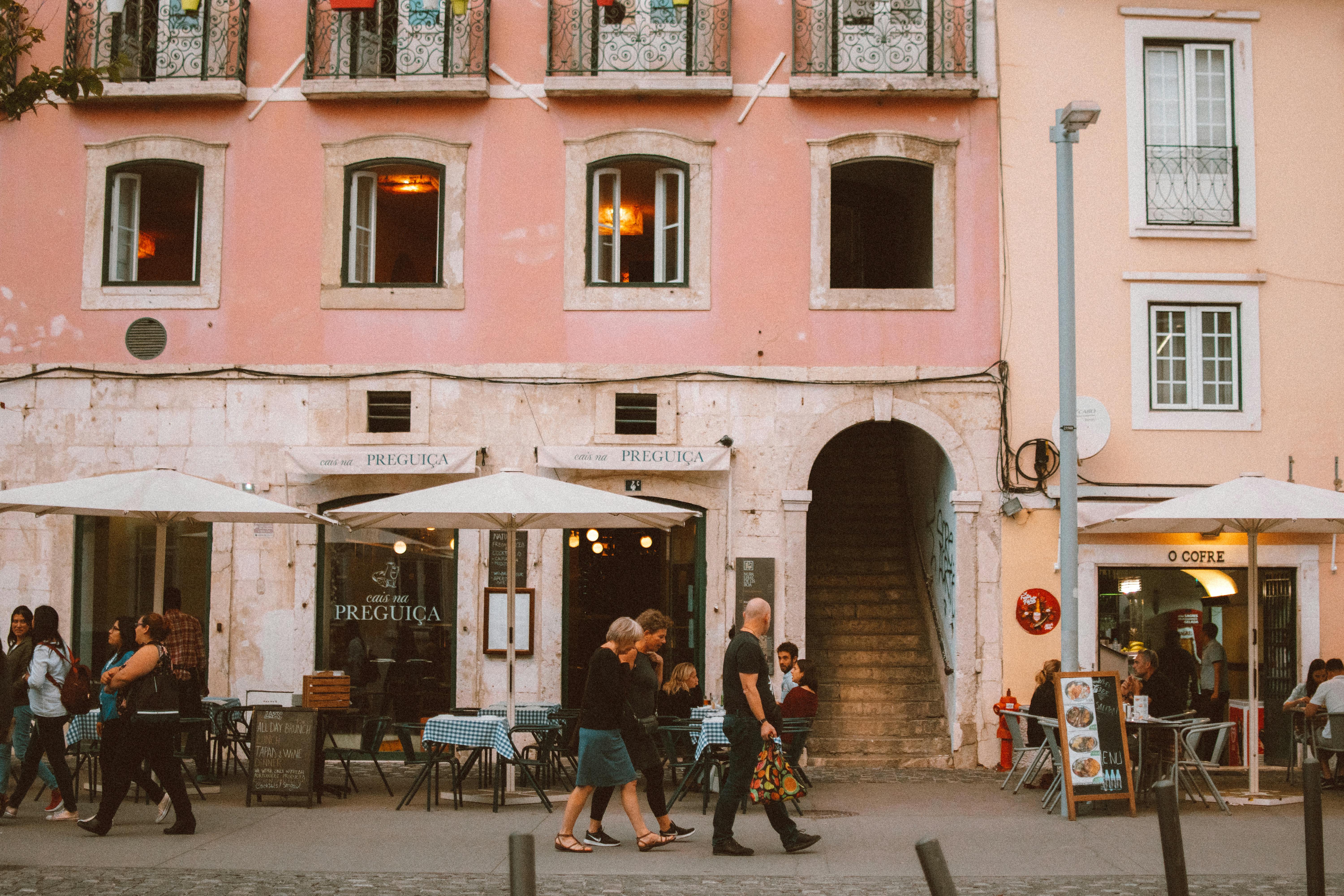Lisbon: The City of Seven Hills, Yellow Trams, and Delicious Custard
Sun-Drenched Rooftops, Fado Soul, and the Taste of Discovery
Get Ready to Climb (and Eat!)
Lisbon, Portugal’s dazzling capital, is a city with a unique golden light, dramatic hills, and a rhythm all its own. Perched on the Atlantic coast, where the massive Tagus River meets the ocean, it’s a place that perfectly blends ancient history with modern, laid-back cool. Forget straight lines and grids (except for the rebuilt downtown); Lisbon is all about winding, narrow, cobbled alleys, historic trams, and stunning viewpoints (miradouros) that pop out of nowhere.
This city is a feast for the senses: the mournful, emotional sound of Fado music drifting from an old tavern, the colourful geometric patterns of azulejo tiles on every building, and, of course, the heavenly scent of freshly baked Pastéis de Nata. Be prepared to walk (a lot!) as you explore districts like the timeless Alfama and the buzzing Bairro Alto. It’s a city full of personality, ready to charm your socks off!
Latest Hotel Offers
Ride the Iconic Tram 28 through the Old Town
If you do absolutely nothing else in Lisbon, you simply must hop aboard the iconic, rickety yellow Tram 28. This isn’t just a means of transport; it’s a living, rattling piece of Lisbon history that provides a spectacular, cinematic tour of the city’s oldest districts. The vintage, single-carriage trams date back to the 1930s and squeak and groan their way through impossibly narrow, curving alleys and up impossibly steep hills.
The Tram 28 route acts as a highlights reel of old Lisbon, winding its way past must-see landmarks, including the medieval São Jorge Castle, the solemn Lisbon Cathedral, and the quaint, timeless backstreets of the Alfama district. Squeezing in and out of tight corners, you'll feel like you could almost reach out and touch the tiled walls. It's best to grab an early morning seat (to avoid the major crowds) and enjoy the noisy, bumpy, and utterly charming ride as the city unfolds before you.
Top Tips for First-Time Visitors
(01)
A Quick Hop to the Coast: Getting to Lisbon is a doddle! Flights from the UK generally take under three hours, making it an ideal long-weekend destination. You'll be swapping your UK pounds for Portuguese pastéis before you know it.
Flying High from the UK
(02)
Schengen Zone Simplicity: Portugal is part of the Schengen Area, meaning UK passport holders can visit for up to 90 days within any 180-day period without needing a visa. Just make sure your passport is valid for at least three months after the day you plan to leave.
Passport Power Play
(03)
The Mighty Euro: As Portugal is in the Eurozone, the currency is the Euro (€). While cards are widely accepted, it's a great idea to carry some cash for smaller local tascas (taverns), local transport, and the tiny kiosks that sell the famous cherry liqueur, Ginja.
Cash, Currency, and Coins
(04)
Portuguese with an English Back-up: The official language is Portuguese. While staff in the main tourist areas and hotels speak excellent English, locals always appreciate the effort if you try a few phrases like "Olá" (hello), "Obrigado" (thank you - if you're male) or "Obrigada" (if you're female).
Chatting with the Locals
4 Things to Do While on Holiday

Eat Pastéis de Nata in Belém
Head to the Belém district (by Tram 15) and join the queue at Pastéis de Belém, the original bakery that has been making the iconic Portuguese custard tart since 1837. Don't call it a pastel de nata here —it's the Pastel de Belém, and it’s a taste of history.

Chase the Sunset at a Miradouro
Lisbon is famous for its hills, and the rewards are the gorgeous panoramic viewpoints (miradouros). Try Miradouro da Senhora do Monte for a spectacular sunset view over the entire city, often with a local musician providing the perfect soundtrack.

Discover the Jerónimos Monastery
This monumental structure in Belém is a towering example of the uniquely Portuguese Manueline style of architecture, celebrating the Age of Discoveries. Its cloisters and soaring church are absolutely breathtaking—go early to avoid the tourist crush!

Get Lost in Alfama
Wander aimlessly through Alfama, Lisbon's oldest neighbourhood. It’s a medieval maze of narrow lanes, colourful washing lines, and hidden courtyards. This is the heart of Lisbon, where you’ll find small Fado houses and tiny shops selling locally made goods.
Reviews
Location Survival Guide
Tram 28 is a Pickpocket Hotspot
Guard Your Goodies: Due to the crowds on the famous Tram 28, it has become a prime target for pickpockets. Enjoy the ride, but keep your bags zipped up, wear them across your body, and never keep wallets or phones in back pockets.
Hills, Glorious Hills!
Embrace the Elevators (and Funiculars): Lisbon’s seven hills can be a killer on the legs. Take advantage of the city's public vertical transport, like the famous, neo-Gothic Santa Justa Lift or the traditional, funicular trams like the Elevador da Glória to cheat your way to the top of the steepest bits!
Dining Times are Late
Eat on Portuguese Time: Dining in Lisbon happens later than in the UK. Most locals eat dinner around 8:30 pm or 9:00 pm. Eating before 7:30 pm marks you instantly as a tourist, but it does mean you’ll always find a table!
The Soulful City of Light
Where History and Happiness Collide on the Cobbles
Lisbon is a city that feels instantly authentic, vibrant, and utterly charming. It effortlessly blends its proud history as the starting point for global discovery with a modern, sunny, and incredibly delicious lifestyle. Whether you are seeking culture, amazing food, a buzzing nightlife, or simply stunning coastal views, the City of Seven Hills invites you to slow down, explore its colourful heart, and fall completely in love with its undeniable soul.
